NFL Best Ball Strategy: Execution
![]()
At this point, I have written several articles for this series on Best Ball strategy. I’ve established some roster construction guidelines, and highlighted some players, or types of players, that are especially valuable in the Best Ball format.
Every draft is different, though. You cannot just sign up for a league and assume that you will be able to draft the exact players that fit your strategy. Each draft presents a unique set of decisions based on your draft position, the number of teams in your league, and your opponents’ picks. How do we apply our guidelines to a moving target? To demonstrate how I approach my own decisions, I’m going to walk through an actual draft.
I had the 12th pick in this draft, a 12-team, $25 Fast Draft (30 second pick timer) on July 31. Since I picked at turn, we can hit two picks at a time and this article won’t go for 10,000 words. Let’s get to it.
Editor’s Note: Use promo code “GRINDERS” when you sign up for Draft and get a 100% deposit bonus up to $600 and THREE months of RotoGrinders Draft Premium content!
Rounds 1-6: Best Player Available
Roster construction is important. I probably care more about it than anyone else you’ll talk to, but for the first few rounds, I’m just looking for value. The players I collect while seeking value for the first several rounds dictate my approach to the rest of the draft.

DeMarco Murray and Jordan Howard (Rounds 1 & 2)
The first round was fairly standard, with six running backs and five wide receivers off the board before my first pick. While I think Jordy Nelson is a tier above the next WRs, the running back drop-off that I expected before my third-round pick drove me to an RB-RB start. Devonta Freeman was the available running back with the highest ADP, but the threat of Tevin Coleman cutting into Freeman’s carries is enough for me to push him behind Howard and Murray, who both averaged over 20 touches per start last year.
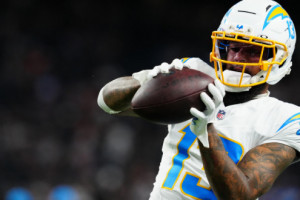
Keenan Allen and Jordan Reed (Rounds 3 & 4)
Alshon Jeffery and Keenan Allen were the last two wide receivers before what I consider a significant tier-break at the position. I was happy to see Keenan make it that far. For the other pick, it was too early for QB and we had reached the question-mark tier at running back (by ADP: Mixon, McCaffrey, Gillislee, Hyde), so I turned to tight end. Locking in Jordan Reed, last year’s leader in tight end points per game (0.5 PPR), gave me first-tier upside at the position and informed me that I would only need one more tight end the rest of the way.
Emmanuel Sanders and Stefon Diggs (Rounds 5 & 6)
Sanders and Diggs were easily at the top of my draft list by the time my fifth pick came around. I discussed the benefits of Sanders’ boom/bust production in last week’s strategy article, and I think Diggs, who was slowed by injury after averaging close to 14 points per game through week 11 last year, is one of the best wide receiver values in this range.
Rounds 7-8: Decision Time (Eddie Lacy and Tyrell Williams)
Through six rounds, my roster comprised two running backs, three wide receivers and one tight end. While both running backs were very early picks, I was starting to feel thin at the position by the time 7.12 came around. This is what the top of my pre-draft rankings looked like at the time:

Lacy was an easy pick for me. He had already fallen past his ADP, and he fits the mold of the running backs I like to target in a half-PPR league: starters who don’t come off the field at the goal line. The tough decision was whether to double-dip at running back, solidifying the position, or take one of the two wide receivers that I felt were well ahead of the remaining field (Williams and Britt). I decided to roll the dice and take Tyrell, hoping that one of the remaining starting running backs would make it back to me. Based on ADP, it was unlikely that Blount would last another 22 picks, but one of Jonathan Stewart, Terrance West or Matt Forte slipping seemed plausible.
Rounds 9-10: Locking up QB Before the Run (Cam Newton and Kirk Cousins)
Of course, my gamble did not pay off as hoped, and all four of the running backs I wanted were taken in round eight or round nine. What that told me was that I would need to hit the high end of the 4-6 target range for number of running backs. It also meant that the draft had entered territory where I do not see a great deal of difference between running back options – it was backups/handcuffs and third-down backs from then on. Here is what the top of my rankings looked like:
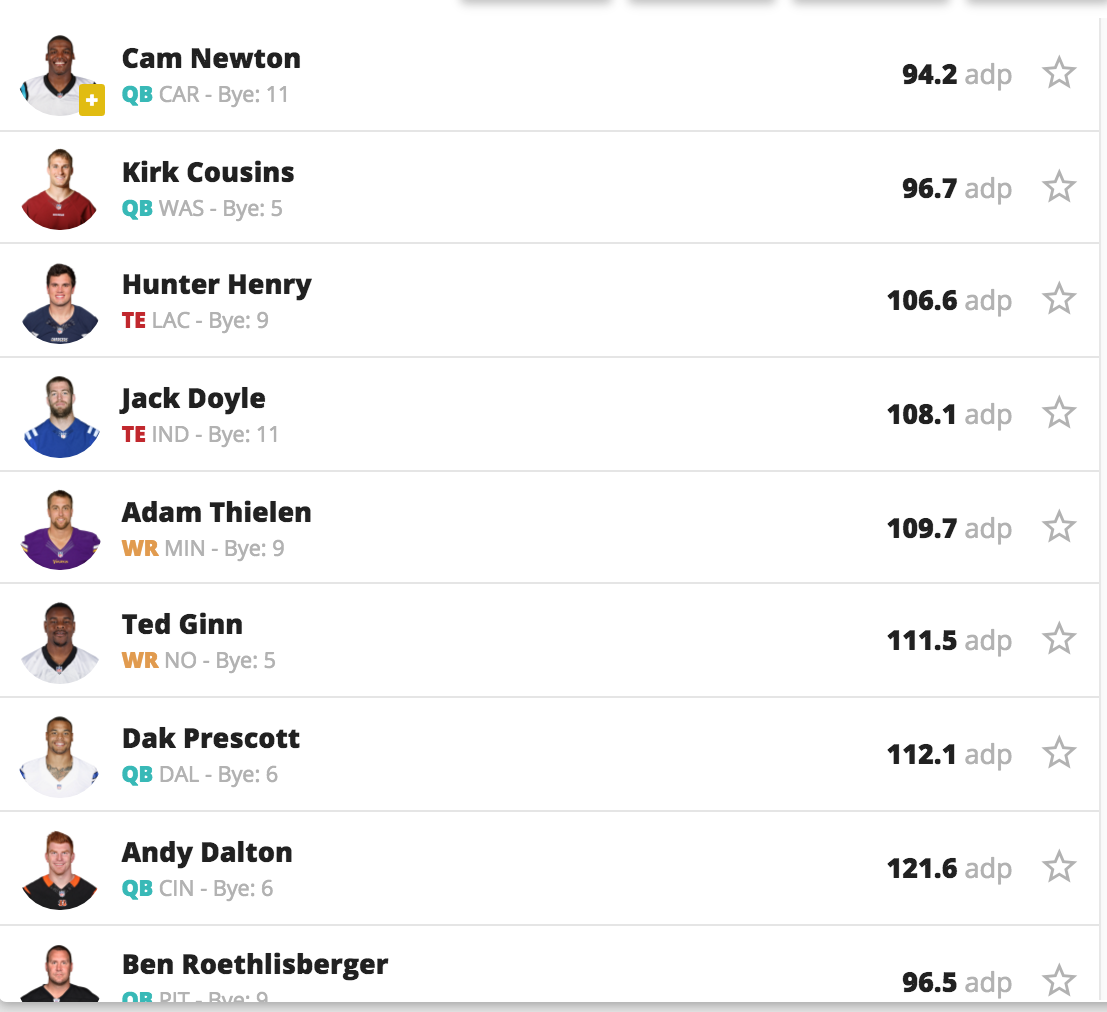
It is pretty common to see a run on quarterbacks somewhere between rounds 9-11. It was a pretty safe bet that most, if not all of the quarterbacks on that list would be gone by my next pick. That made this a perfect time to use both picks on QB. By taking both Cam Newton and Kirk Cousins at the turn, I set myself up to stop at only two quarterbacks, which is something I would not have been comfortable doing had I waited two more rounds to secure a QB2. That decision not only got me ahead of the impending run on the position, but also freed up a roster spot for the sixth running back that I’d already decided I’d want. Eight additional quarterbacks were drafted before my next pick.
Round 11: Closing out Tight End (Jason Witten)
I’d known since the fourth round that I only needed one more tight end. I love Jason Witten as a complement to Jordan Reed. While Witten doesn’t offer much upside, he has been a remarkably consistent producer for a tight end. I don’t need upside here – I have Reed for that. I just wanted a guy who I was sure would be there, scoring points, when Reed was on a bye. Witten fits perfectly and will likely contribute a few flex-worthy scores along the way.
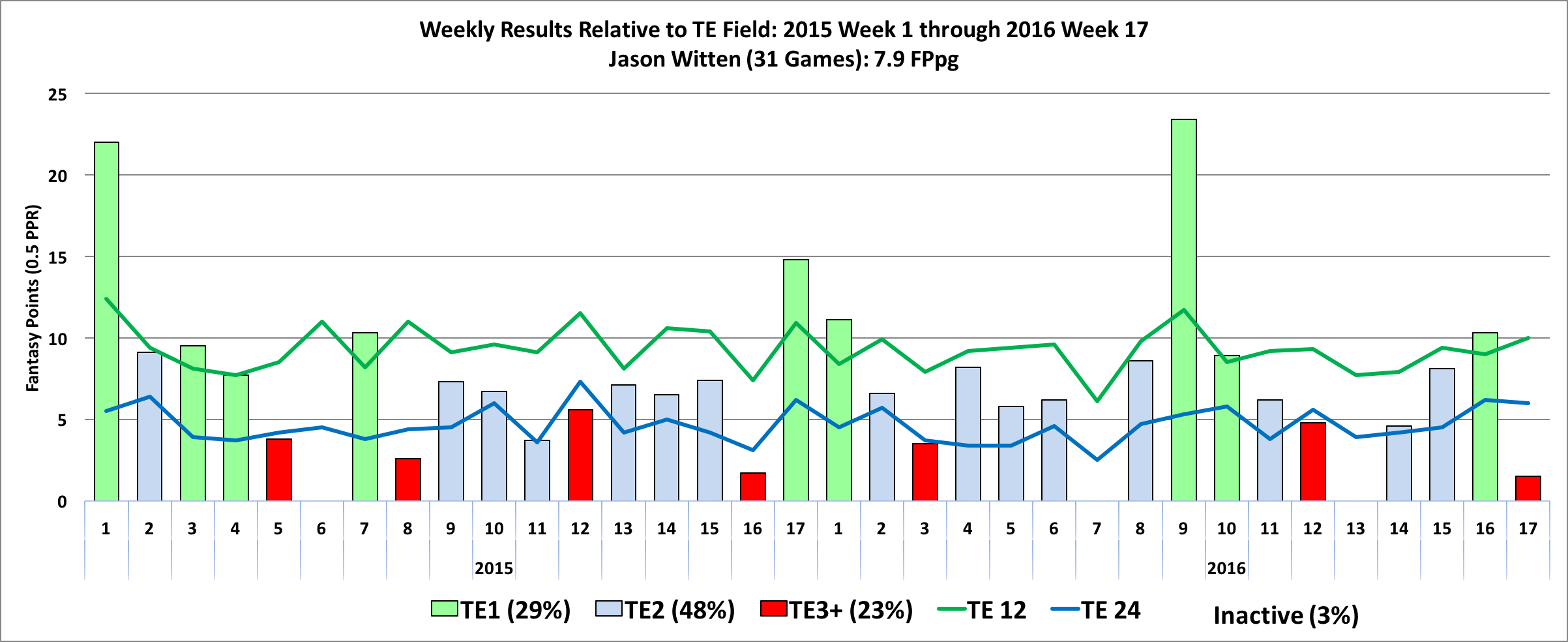
Rounds 12-18: Balancing Ceiling and Floor
Here is my roster after 11 picks:
• QB (2): Cam Newton, Kirk Cousins
• RB (3): DeMarco Murray, Jordan Howard, Eddie Lacy
• WR (4): Keenan Allen, Emmanuel Sanders, Stefon Diggs, Tyrell Williams
• TE (2): Jordan Reed, Jason Witten
I’d already decided that I would like to end up with six running backs, which left me with four picks to use on wide receivers. My objective was to build in a little bit of a floor at running back and shoot for volatility at wide receiver. I followed the Witten pick with James White, thinking his passing game involvement gave him at least a modest floor, and the strength of the Patriots offense gave him upside for more. In retrospect, Darren Sproles, who went two picks later, might have been a better man for the job.
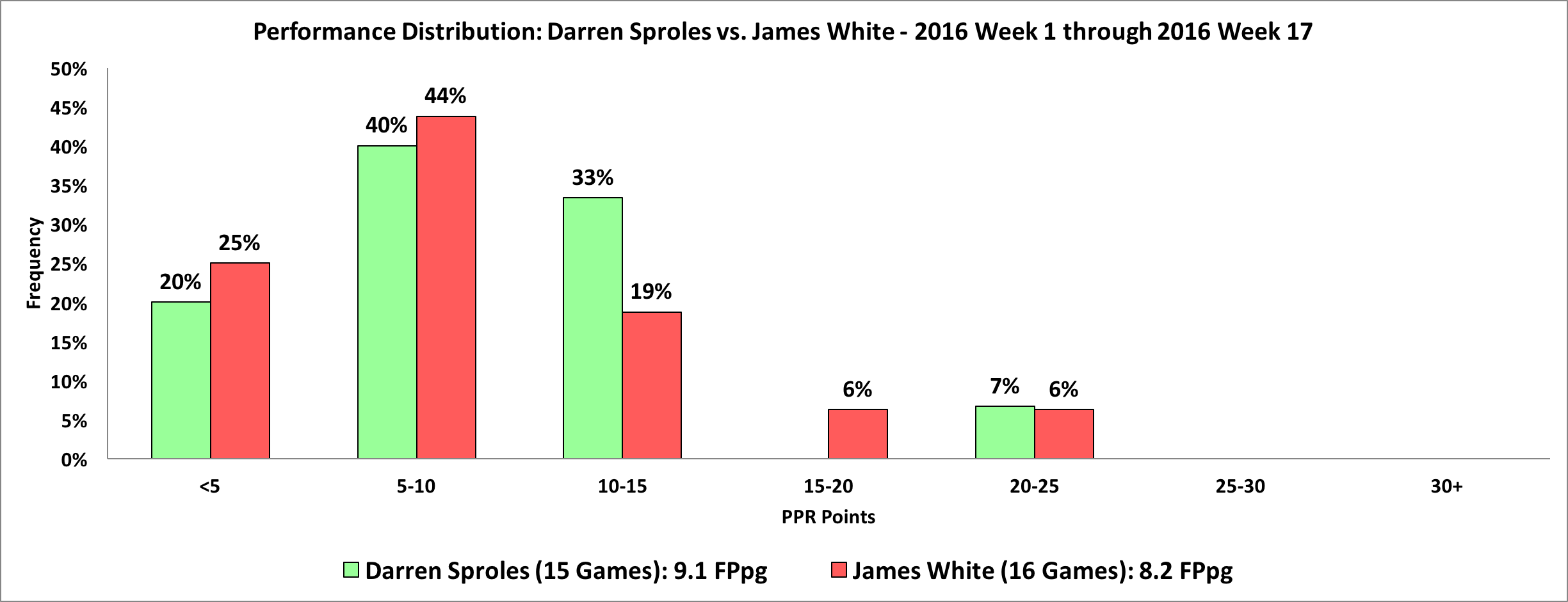
After White, I went for three straight wide receivers, all of whom I expect to exhibit a boom/bust profile: Will Fuller, Kenny Stills and Marqise Lee. That left me three picks to fill with two running backs and one wide receiver. With the first pick of the 16th round, I selected Shane Vereen, doubling down on the pass-catching floor idea. Vereen had some bad injury luck last year, but in 2015, in the same role he should have this year, he averaged over 8 fantasy points per game, and scored 10-plus points six times – that would be a great return on a 16th round pick.
My last two picks, Tim Hightower and Kendall Wright, were not pure dart-throws, but I am also not counting on their production to carry the team. Hightower could get involved in the passing game in San Francisco, where he has reunited with Kyle Shanahan, who was his offensive coordinator in Washington years ago. I like Wright as an 18th round pick because of the lack of other options in the Chicago passing game. When comparing their contracts, it appears the Bears have bigger plans for Markus Wheaton than for Wright, but I’m not convinced that Wheaton is a better player, and we still have no idea how good Kevin White really is. There’s a believable path toward Wright sliding into the WR2 role in Chicago by year end.
And there we have it. Here is the final draft board:
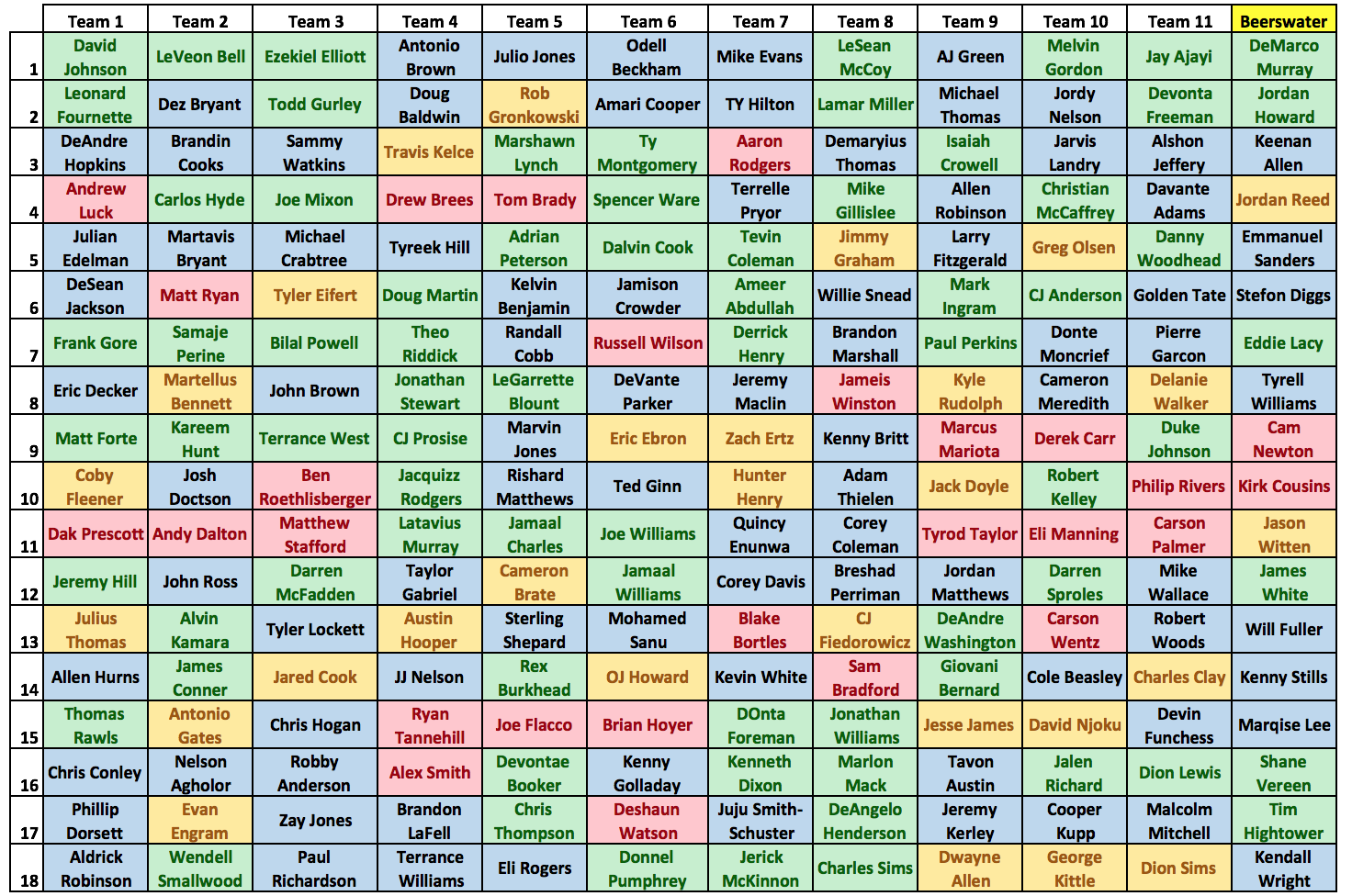
I hope that you’ve found it helpful to see how I go about practicing what I preach. Tell me in the comments which team you like the most, and where I screwed up along the way!